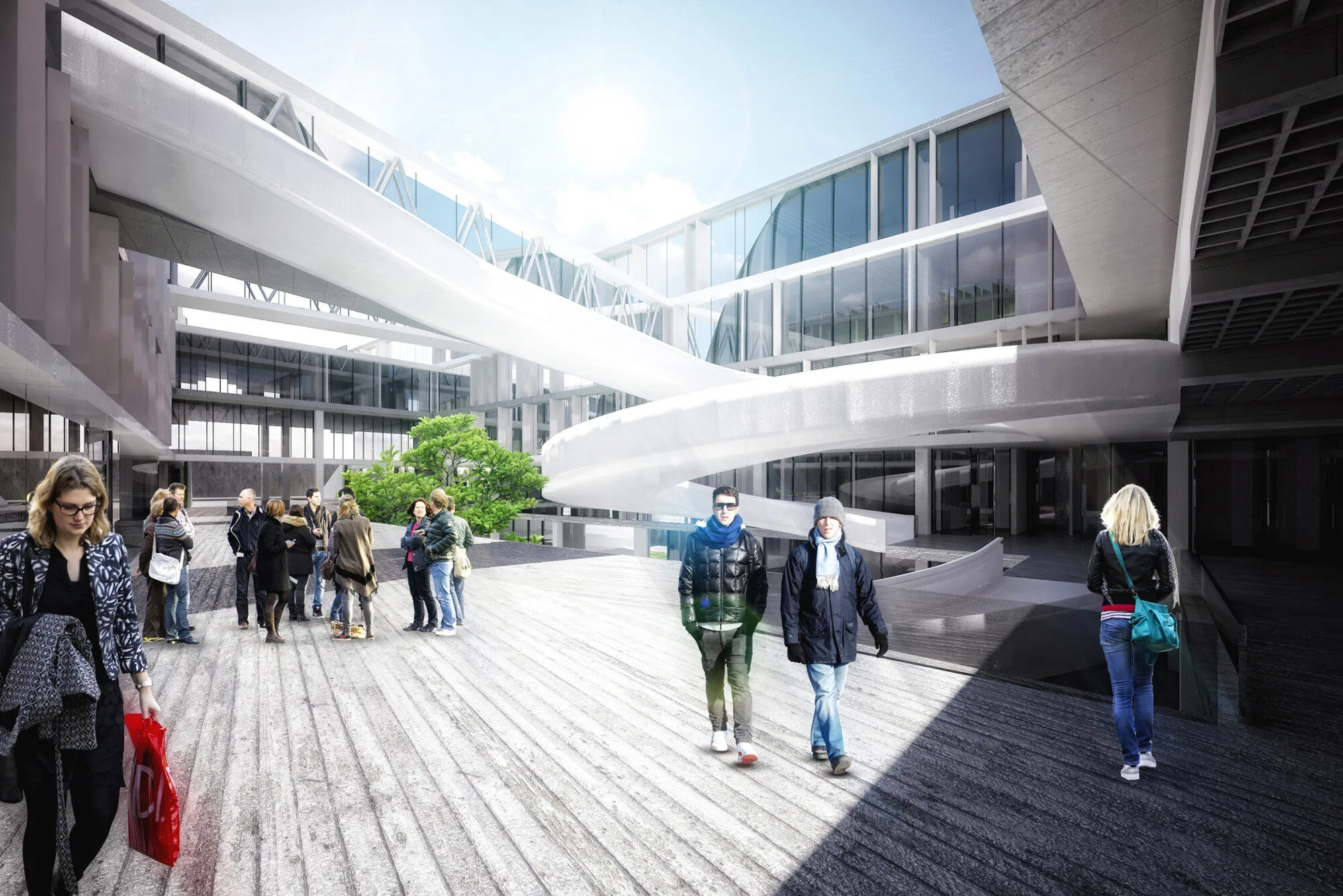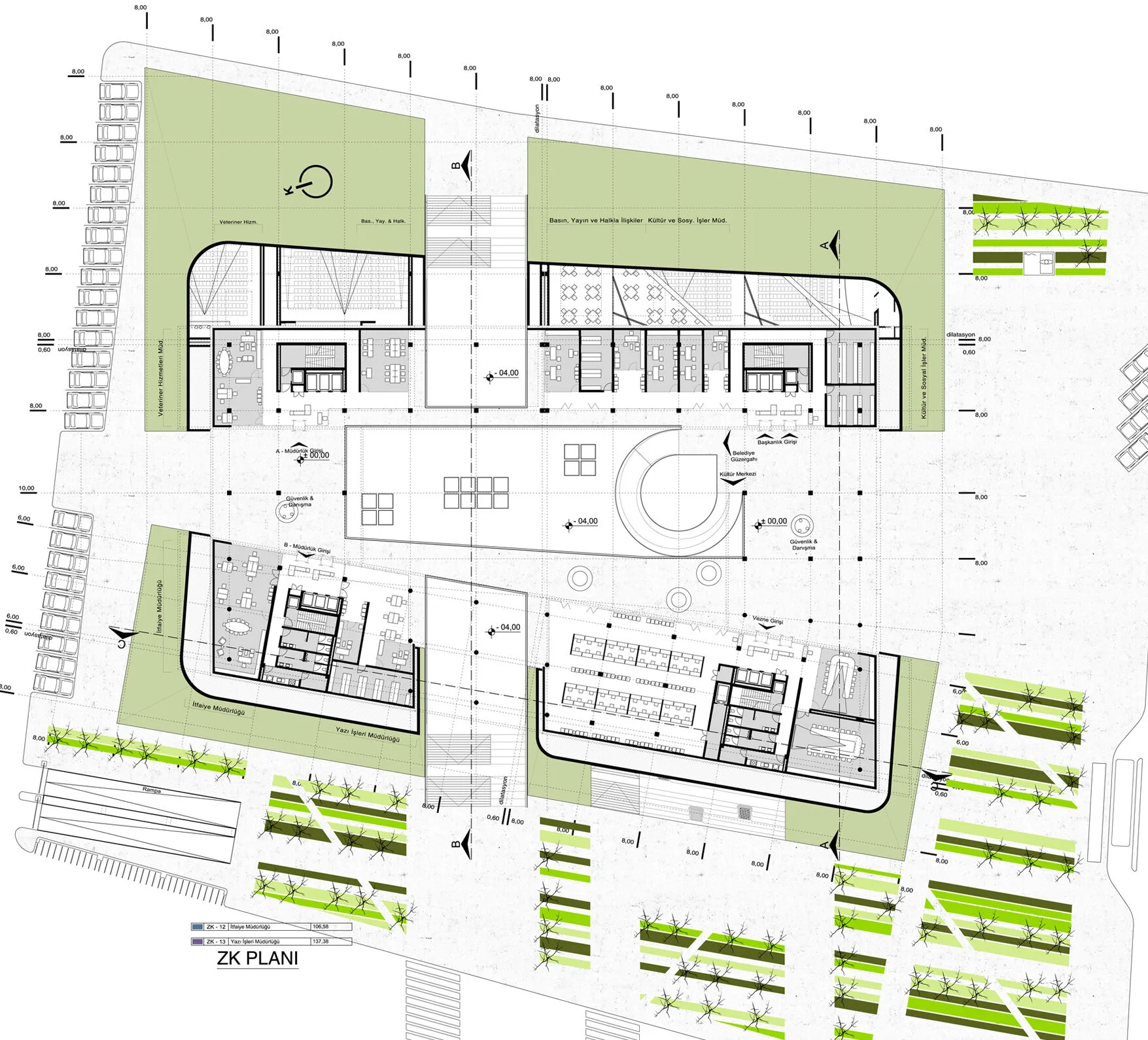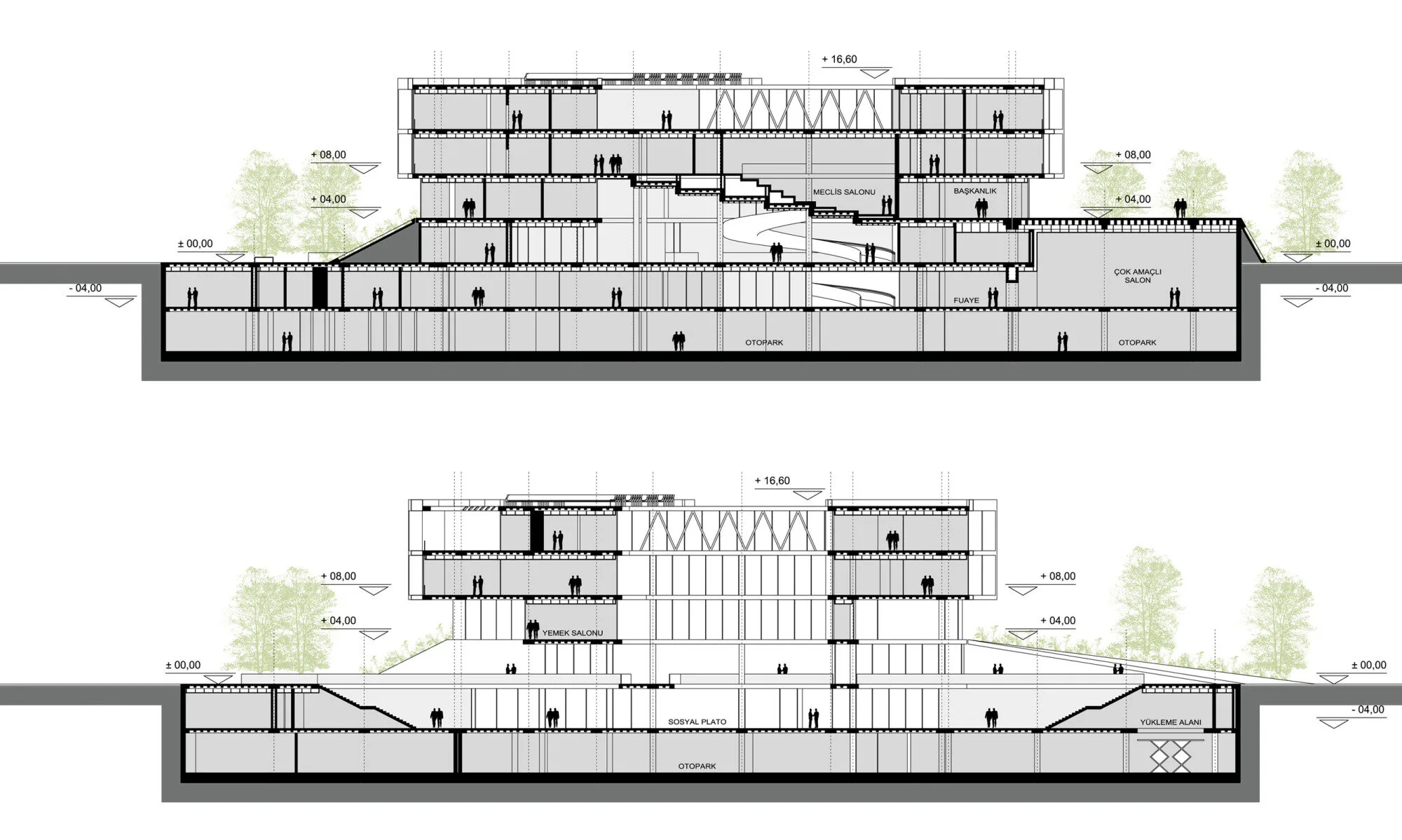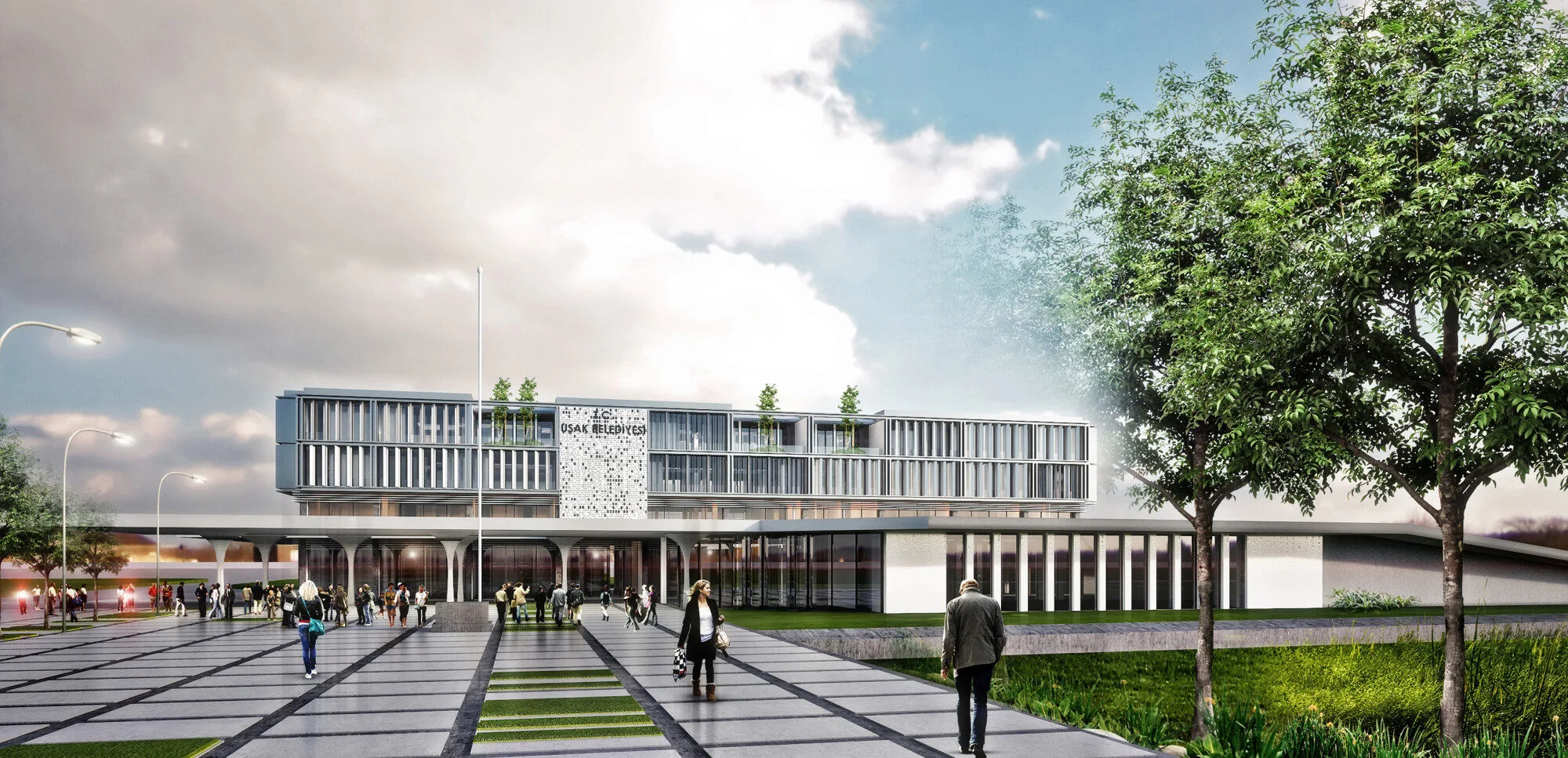
Canakkale Municipality Building
Canakkale Municipality Building
The concepts of "Green Architecture," "Sustainable Energy," and "Ecological Design" have increasingly occupied a significant space in architectural discourse, particularly in recent years. Undoubtedly, behind the trends that constitute this domain lies a form of sensitivity that can be sanctified, regardless of the level of consciousness involved. The changes that we can trace within the framework of global warming are the clearest indicators of how limitlessly humanity has impacted the world it inhabits. It is now a measurable reality that the building industry is one of the most crucial elements in this process. The life-altering effects of urban heat islands resulting from dense construction, the adverse changes in the land, and the intensification of usage in certain areas through new settlements are all factors that disrupt ecological balances. In light of such realities, it is inconceivable for any architect, as a pivotal actor in this industry, to remain entirely oblivious to the events unfolding around them in this context.
Canakkale Municipality Building
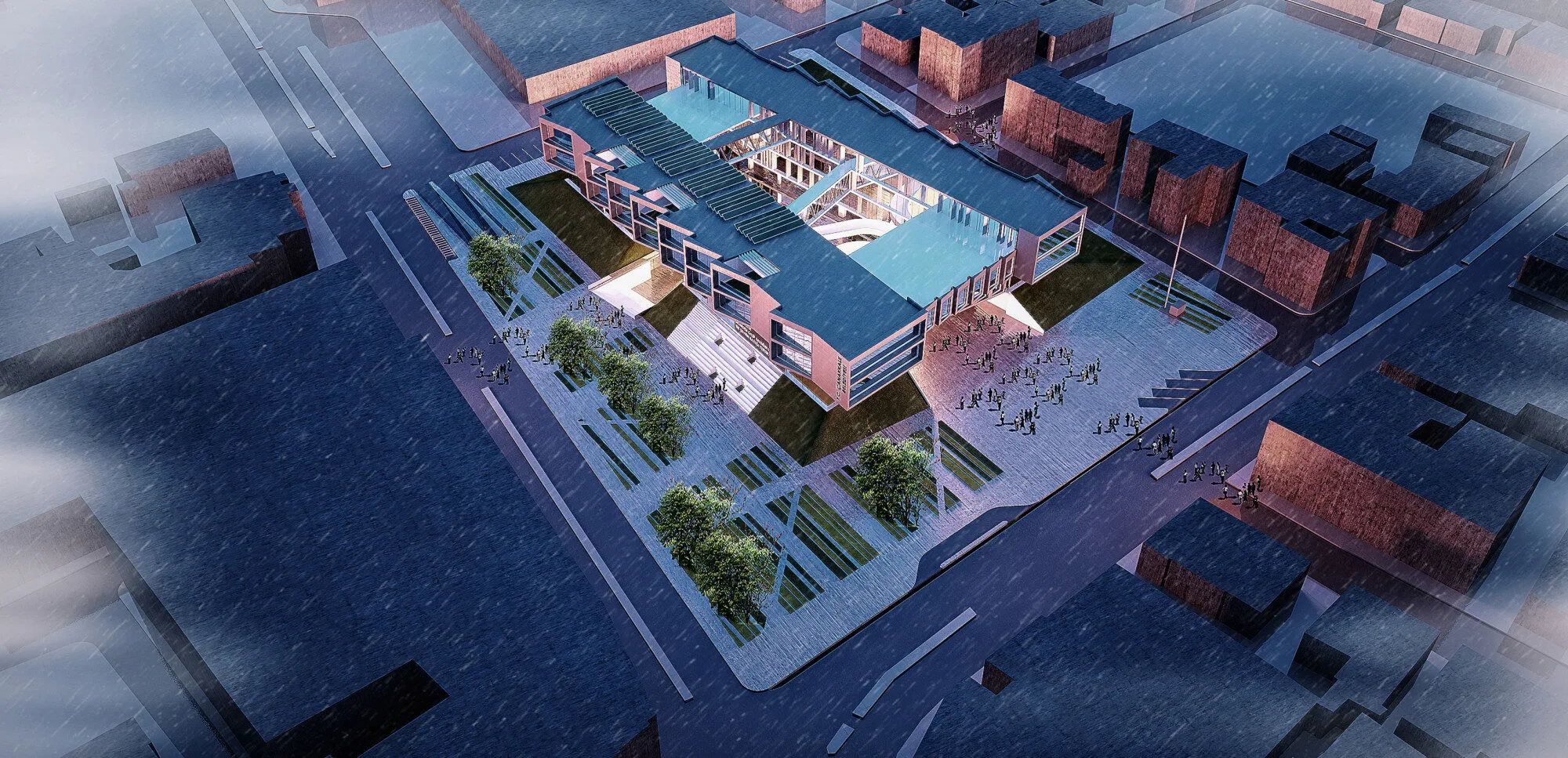
When conceptualizing the Çanakkale Municipality Local Government and Cultural Center Building, the theme of sustainability has been a dominant character throughout all stages of design decision-making. Initially, the sustainability concept was explored alongside the influence of green and nature, fostering ideas about the role of humanity within this framework. In this regard, an analysis of the design area highlights its significance as a crucial point for the city and a substantial opportunity for the urban voids that the city dweller requires.
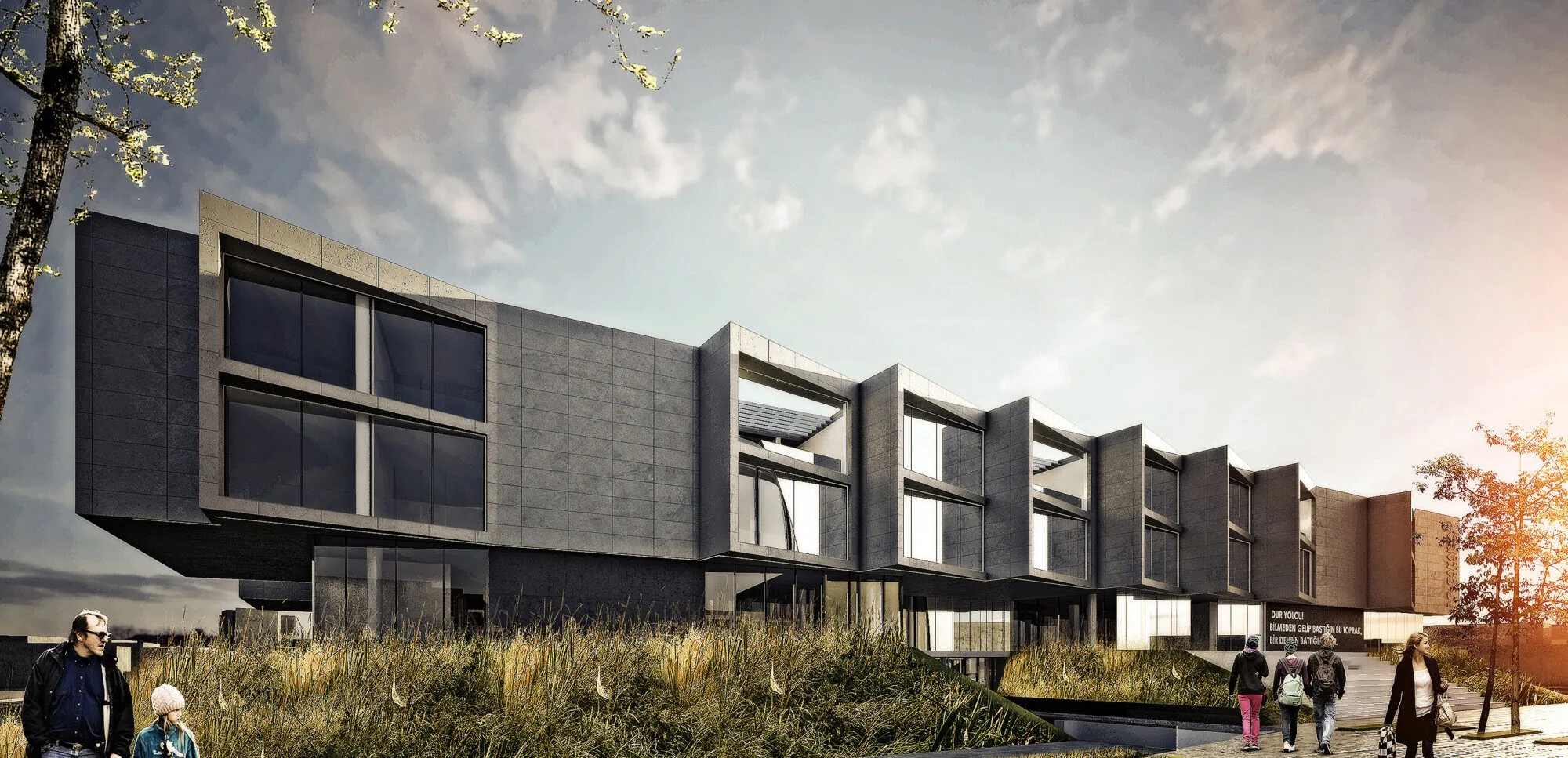
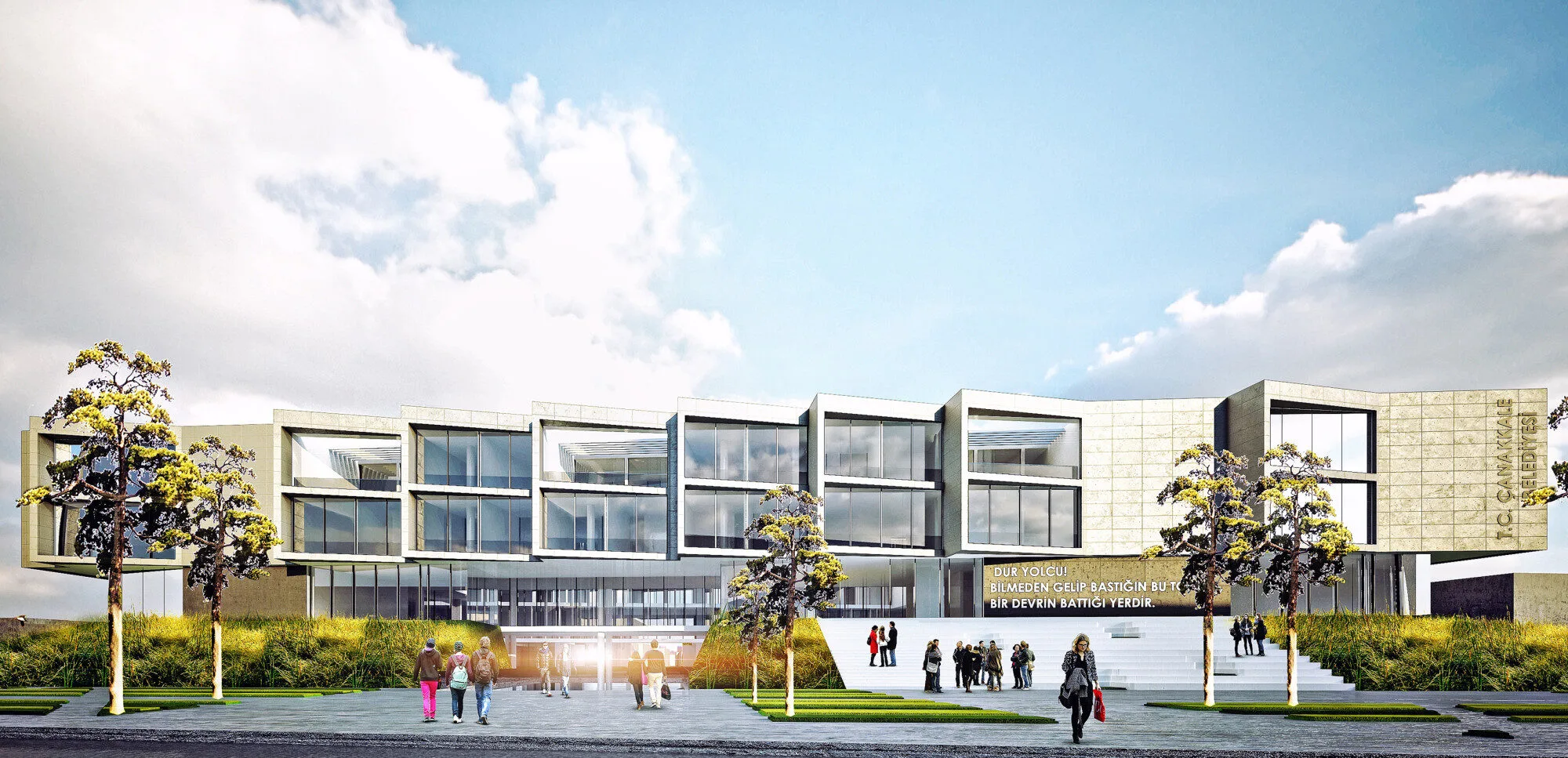
To make all these phenomena palpable, the intensive building program has been cleverly concealed within green mounds resembling the nearby tumuli. To ensure that the relevant public spaces become ingrained in the urban memory and are easily accessible, a "courtyard" has been created within the arrangement, directing the entrances of all spaces toward this openness. Thus, this element, designed in an integrated and fluid form with the ground, has alleviated the cumulative density of the program.
Departments that can be repeatedly positioned in sequence have been accommodated within approximately two floors of building volume, situated at an upper level. This approach aims to enhance the sustainability of the urban fabric at a structural scale as well.
